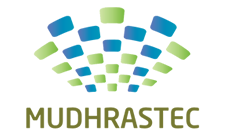
Inspection Service Management
An Inspection Service ERP (Enterprise Resource Planning) system is designed to manage and streamline the processes involved in conducting inspections across various industries. Whether it’s for safety, quality assurance, compliance, or maintenance, this system integrates scheduling, reporting, data management, and analytics to improve efficiency and accuracy.

Here’s an overview of the key components and features of an Inspection Service ERP system:
Web ERP Key Features
- Inspection & Training Dashboard
- Job Order & Scheduling
- Equipment & Training Task Details
- Multi Approval Process
- Time Sheet Allocation
- Expiry Remainder Mail Alert
- Task & Expiry Report
- Equipment & Training Certificate conversion
- Certificate & Id Card Bulk Print & Download
- Auto- generated QR code
- Customer Portal for genuity check
Key Components
Inspection Scheduling and Management:
Automated Scheduling: Plan and automate inspection schedules to ensure timely compliance and maintenance.
Resource Allocation: Assign inspectors based on availability, qualifications, and workload.
Checklist and Protocol Management: Create and maintain standardized checklists and protocols for different types of inspections.
Mobile Inspection Tools:
Mobile Applications: Enable inspectors to conduct inspections using mobile devices for real-time data entry and updates.
Photo Capture: Allow inspectors to capture photos as evidence during inspections.
Digital Signatures: Facilitate the use of digital signatures for validation and approval of inspection reports.
Data Collection and Management:
Data Entry and Validation: Ensure accurate data entry with validation rules and error checks.
Data Integration: Integrate with other systems such as CRM, ERP, and asset management for comprehensive data management.
Centralized Database: Maintain a centralized database of all inspection records for easy access and retrieval.
Compliance and Standards Management:
Regulatory Compliance: Ensure inspections comply with industry regulations and standards.
Audit Trails: Maintain detailed audit logs of all inspections and changes for accountability.
Certification Tracking: Track and manage certifications required for compliance with industry standards.

Reporting and Analytics:
Customizable Reports: Generate detailed reports on inspection results, trends, and compliance metrics.
Real-Time Dashboards: Provide visual dashboards for quick insights into inspection activities and outcomes.
KPI Monitoring: Track key performance indicators related to inspection efficiency, compliance, and issue resolution.
Issue and Risk Management:
Issue Tracking: Record and manage issues identified during inspections, assigning responsibilities for resolution.
Risk Assessment: Conduct risk assessments to identify potential hazards and prioritize inspections.
Corrective Actions: Implement and track corrective actions to address identified issues and prevent recurrence.
Customer and Stakeholder Communication:
Automated Notifications: Send automated notifications and reminders to customers and stakeholders about inspection schedules and results.
Stakeholder Access: Provide stakeholders with secure access to inspection reports and data through a portal or app.
Feedback Collection: Collect feedback from clients and stakeholders to improve inspection services.
